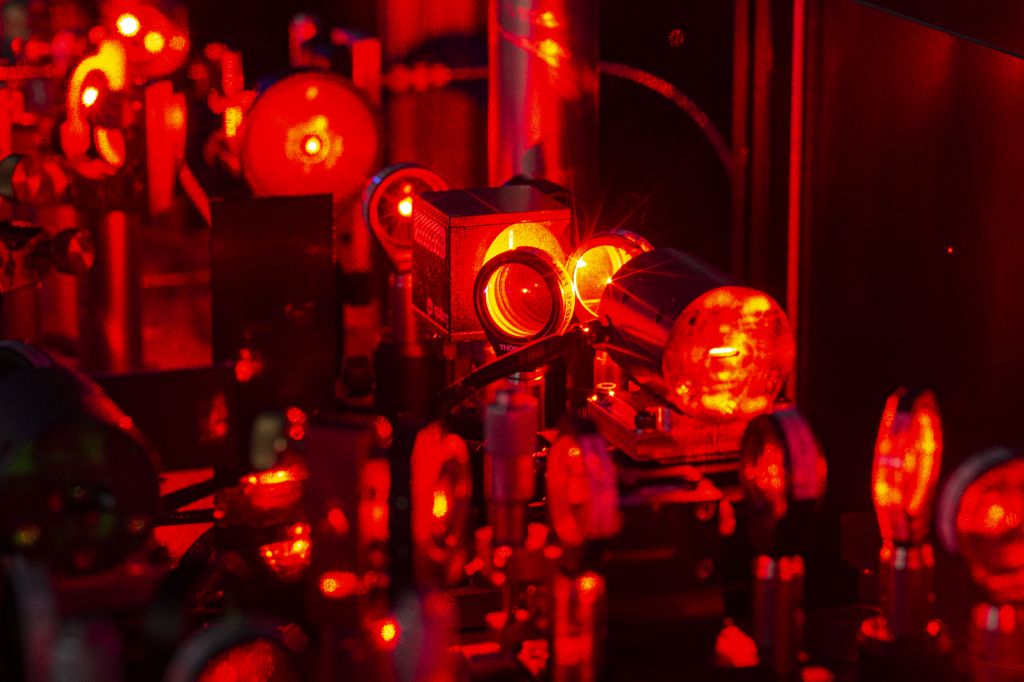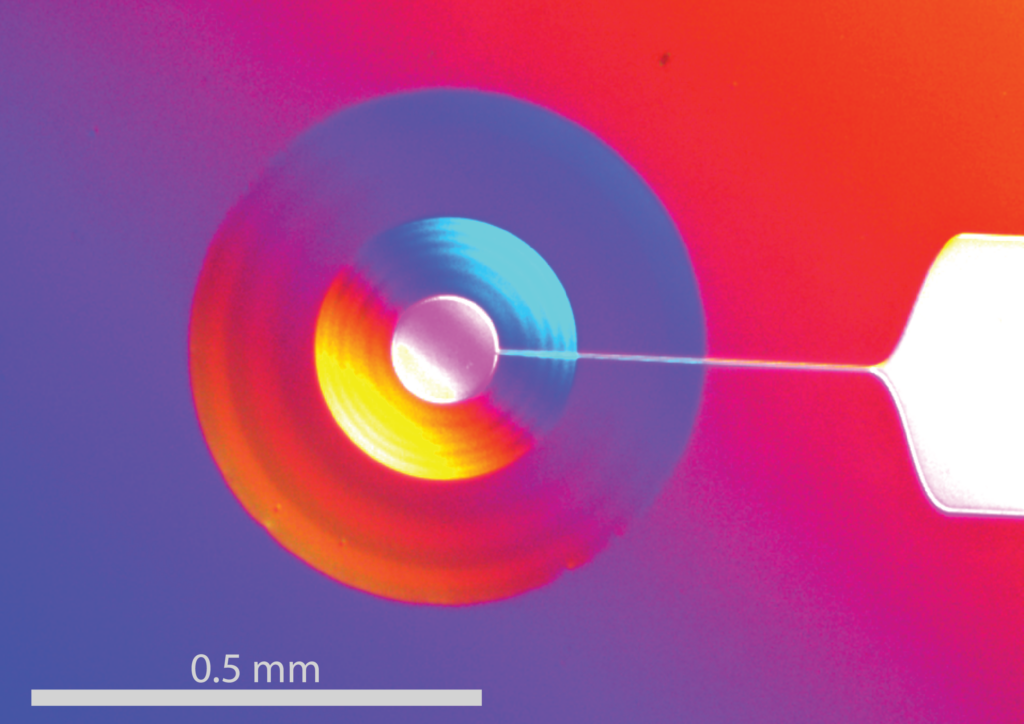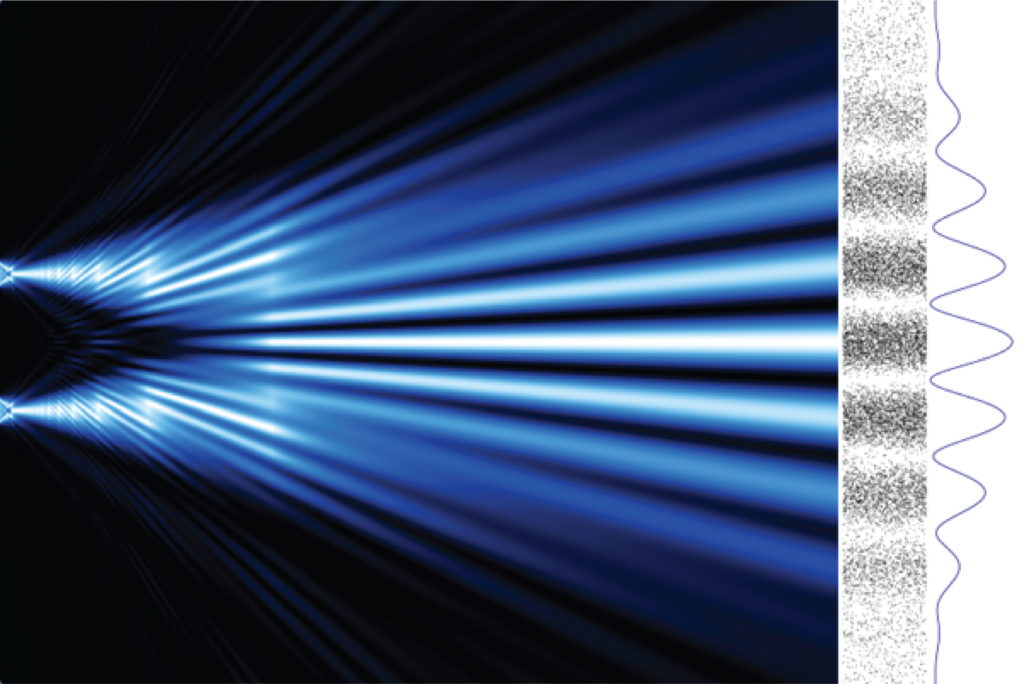A computer made of light and sound particles

The possibilities of quantum computers intrigue experts and laypeople alike. But what is such a computer based on? And what role do the surprising laws of the quantum world already play in our daily lives? Immerse yourself in this world and try to convert sound into light yourself.

Around the world researchers are trying to build a machine that might fundamentally change how we understand the world – a computer that can simulate nature as it truly is. The quantum bits, or qubits, that such a ‘quantum computer’ is made of can take many different shapes, but some of the most popular kinds are single particles of light, called photons.
Particles of light and sound
The idea that light can be both a particle and a wave is more than 100 years old now. Only in recent decades, however, have researchers managed to control photons with sufficient precision to build the first quantum computers.
Recently, it was demonstrated that we can also create and control a single particle of sound, a phonon. These sound particles could be a very useful building block for a quantum computer. It could be used to store the information for a long time, or to help correct tiny errors in the computer.
Try for yourself..
Here you can observe for yourself some of the strange effects that govern the world of single photons and phonons. For example, even though these particles cannot be split into parts, they can still be made to take two different paths simultaneously.
Because the laws of quantum mechanics apply to any fundamental particle, the information carried by one type of particle can be converted to another type. Here you can try for yourself to convert sound into light, and back! Such conversion techniques are also at the heart of what connects nearly everybody in the world today: the internet.
For those who like to get the real lab experience, you can try to couple a laser into an optical fiber. Although this is a core part of doing research in quantum physics, you’ll find it’s a tricky thing to do!


